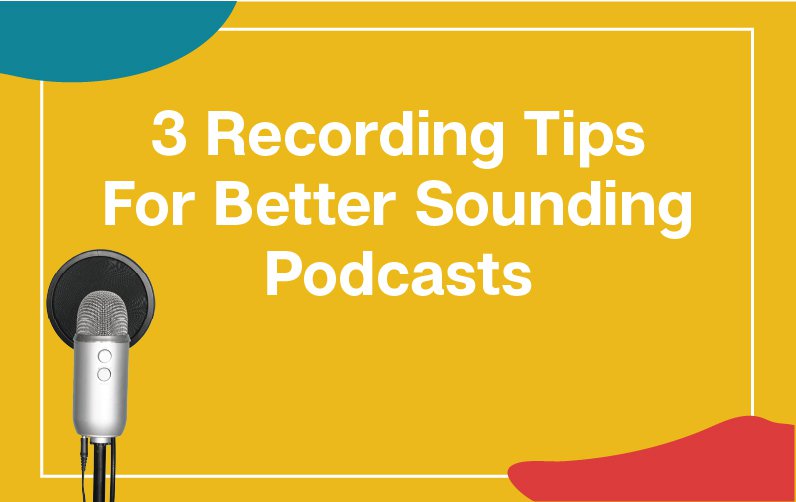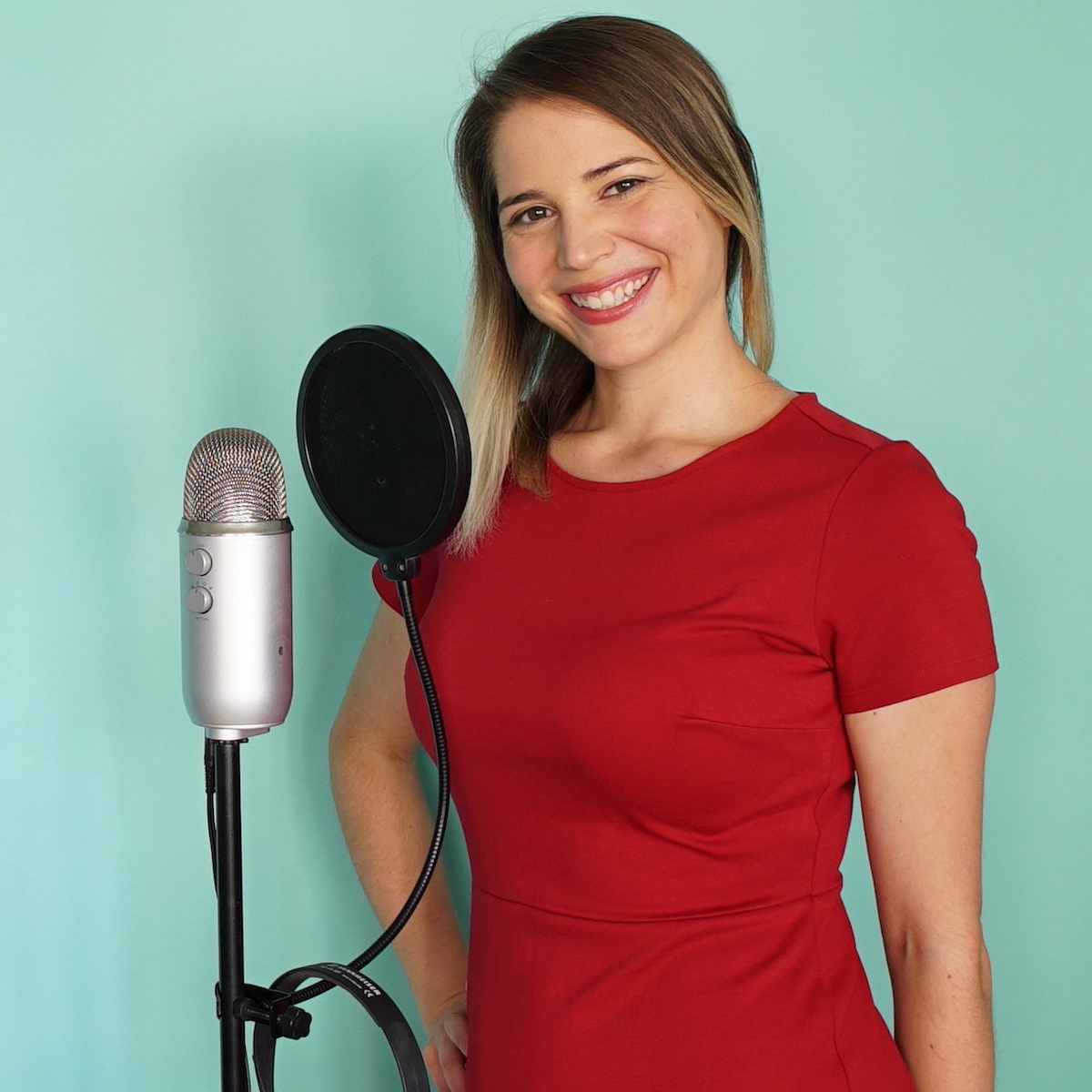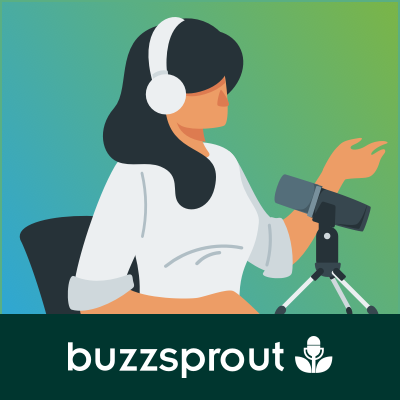Now that you have a foundation and you’re getting better at recording your podcast, it’s time to level up that podcast audio quality! These are my 3, simple to follow steps to get better podcast audio ever time you hit record!
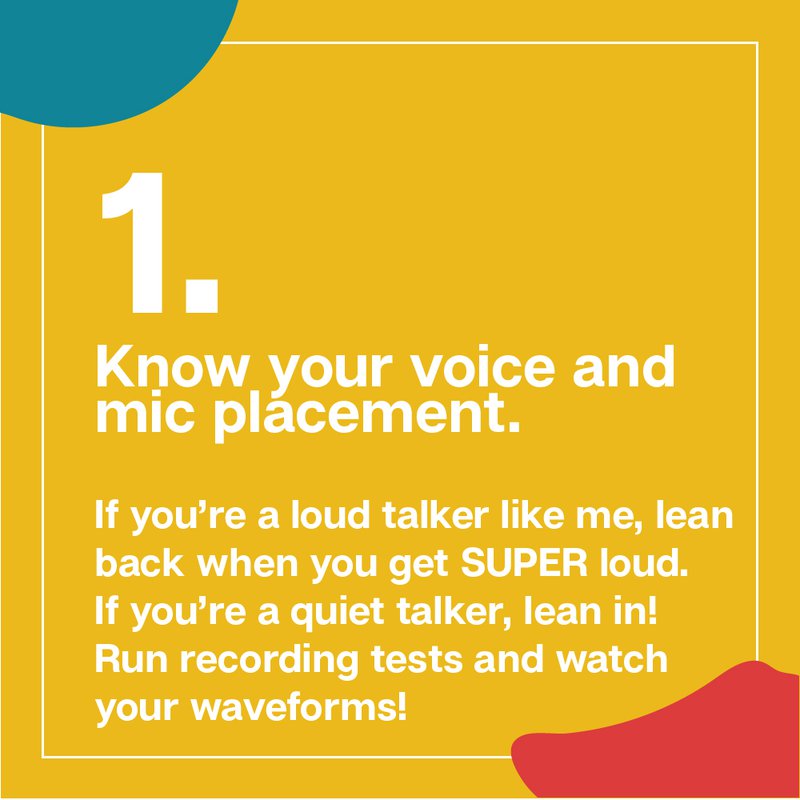
1. Know your voice and mic placement.
If you’re a loud talker like me, lean back when you get SUPER loud. If you’re a quiet talker, lean in! Run recording tests and watch your waveforms. When you listen back to your audio, note the points that sound super quiet and the points that sound super loud. Try recreating those moments with your mic to create the muscle memory for your voice’s optimal placement. When in doubt lean in for quiet moments and lean back for loud moments!
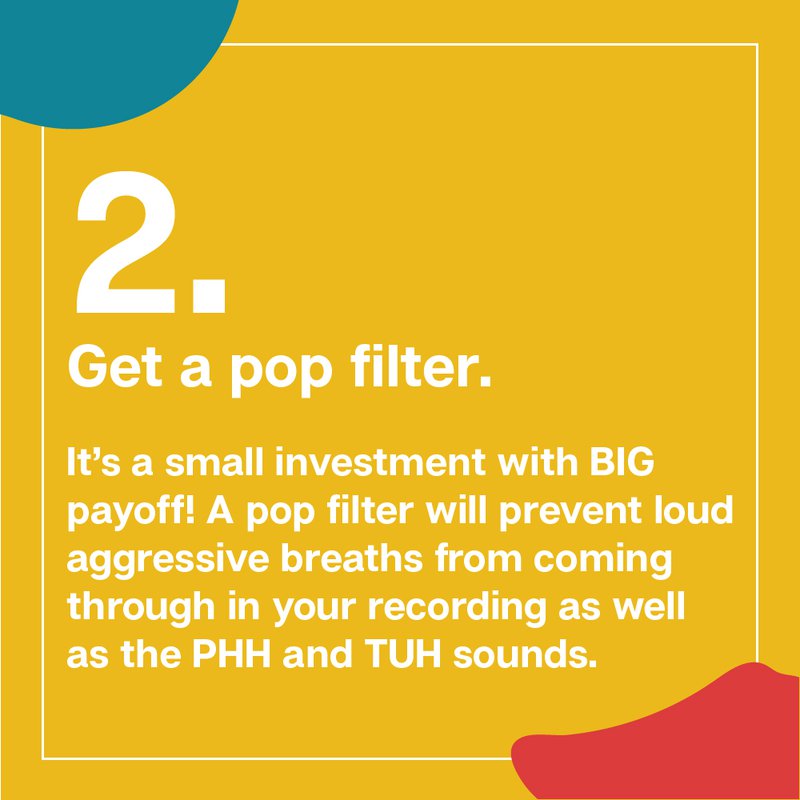
2. Get a pop filter.
It’s a small investment with BIG payoff! A pop filter will prevent loud aggressive breaths from coming through in your recording as well as the PHH and TUH sounds. Pop filters are available for less than $20 and clip onto your mic stand. A pop filter is not the same thing as a wind sock – so the little squishy thing that came with your mic that fits like a sock over the top of the mic will not have the same effect.
Pop filters should be 3-4 inches away from your mic, and you should be 3-4 inches away from your pop filter. With a wind sock, you’re likely to be even closer to the mic because nothing’s stopping you.
Why do you see some people holding mics directly in their mouths though?
They’re likely using dynamic mics which have a completely different setup and sensor structure inside. They are designed to handle louder sounds and have a higher SPL (screams per lady… er… sound pressure level!).
If you’ve picked up a Blue Yeti or an Audio Technica AT2020 or something similar, you likely have a condenser mic which is designed to capture a much wider range of sounds with its delicate sensor. So don’t breathe aggressively into it, it sounds weird.
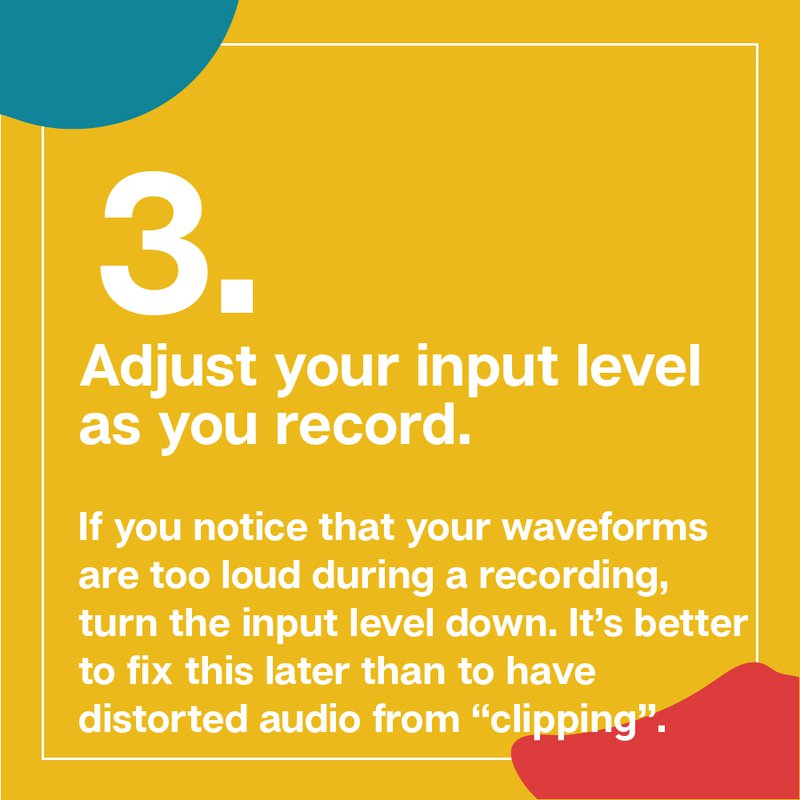
3. Adjust your input level as you record.
This is a little bit more advanced but the better you get to know you voice and mic placement, the easer it will be to see if your settings need to change as you’re recording. If you notice that your waveforms are too loud during a recording, you can turn the input level down either on the mic itself or in your recording app. It’s better to fix this later than to have distorted audio from “clipping”.
Clipping is clear to see in your waveform, because you’ll be able to see the top height of the waveform extending beyond the track vertically. You’ll also be able to see this if your level monitor is going into the red zone.
What else do you need help with for recording? What sounds weird? Ask me your questions and I might just answer them in an upcoming post!

